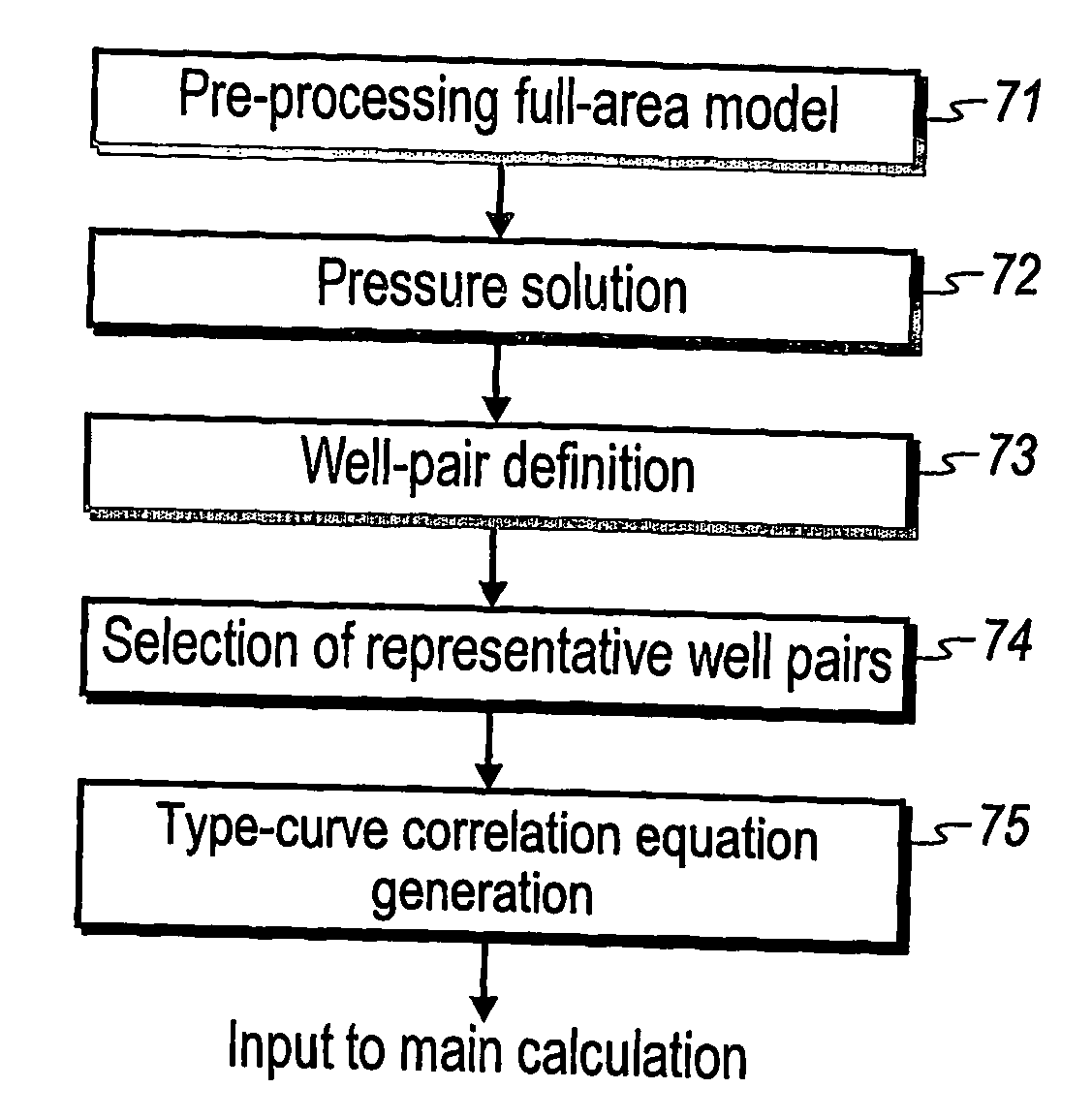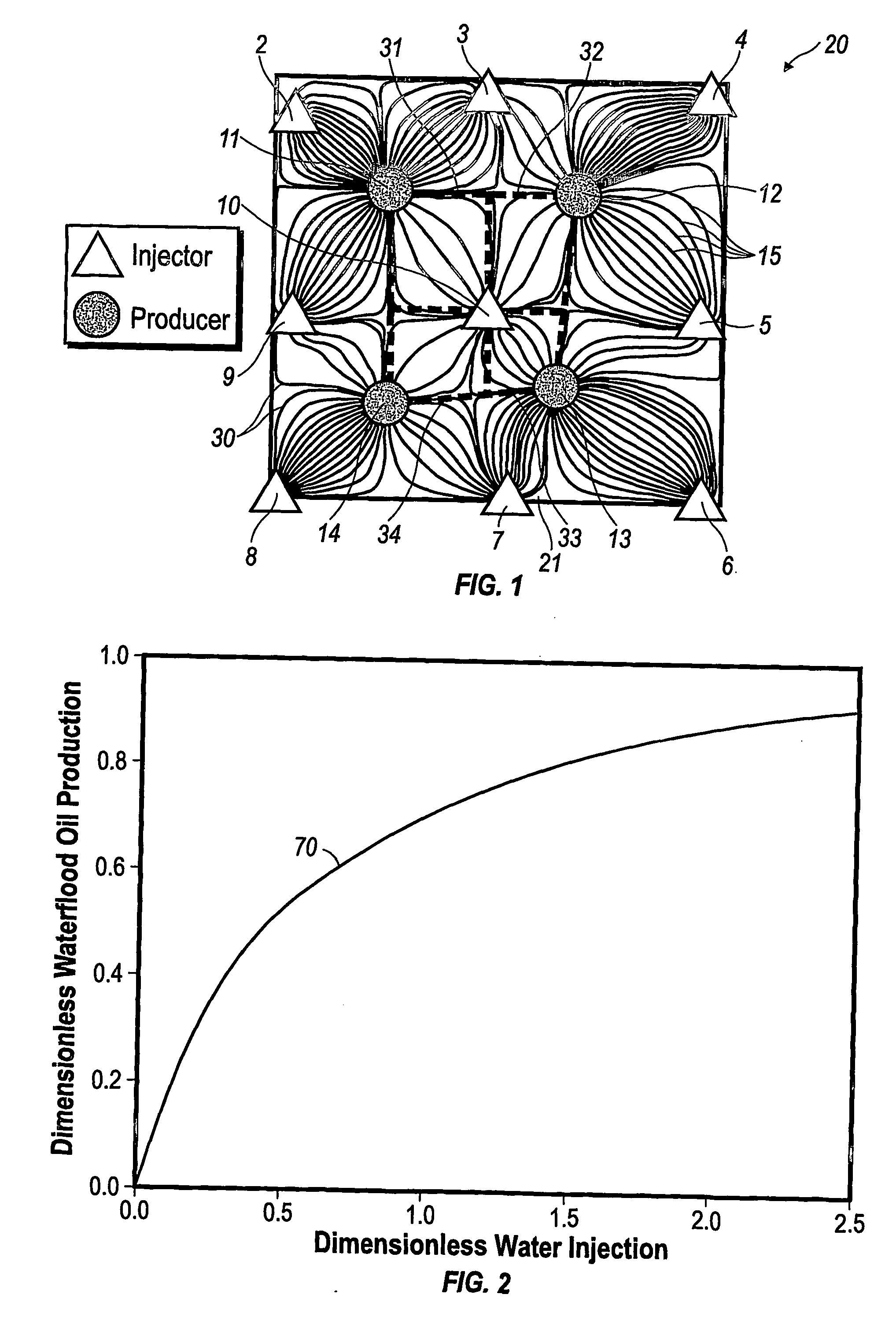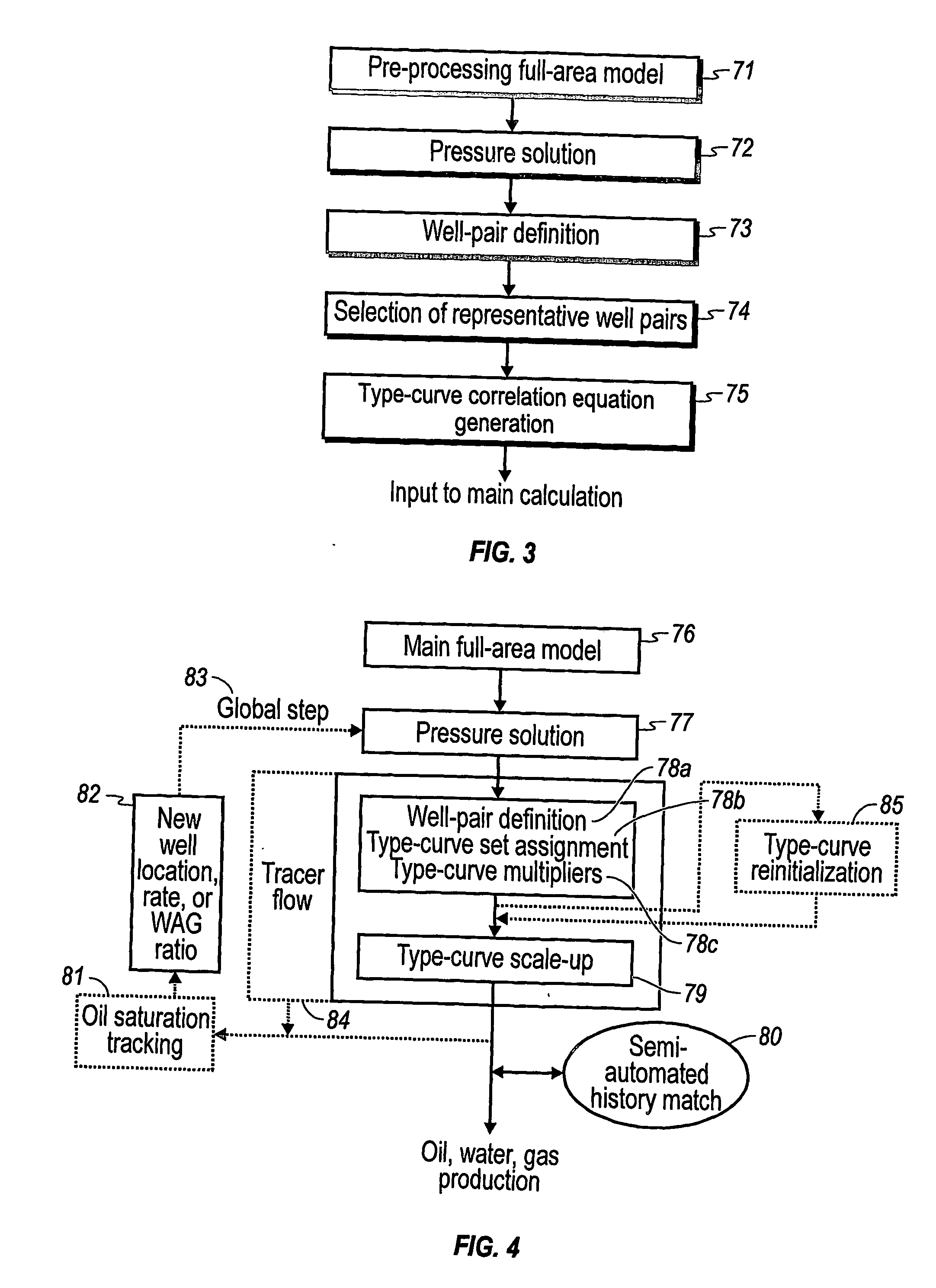Performance prediction method for hydrocarbon recovery processes
a hydrocarbon recovery and performance prediction technology, applied in the direction of instruments, computation using denominational number representation, borehole/well accessories, etc., can solve the problems of complex operation of such a patterned flood, difficult computation, and difficult allocation of expensive miscible solvent among injectors
- Summary
- Abstract
- Description
- Claims
- Application Information
AI Technical Summary
Benefits of technology
Problems solved by technology
Method used
Image
Examples
Embodiment Construction
[0039] The following description and claims make use of mathematical symbols, many of which are defined as they occur in this description. Additionally, for purposes of completeness, a table containing definitions of symbols used herein is presented following the detailed descriptions. Before proceeding, definitions of principal terms used in the description and claims are provided to aid the reader in understanding the invention.
[0040] CPVD is an acronym for connected pore volume distribution that is further detailed in the section on selection of representative well pairs.
[0041] Element model means a small flow model that represents a fraction of a flood pattern and contains at least one injector-producer pair.
[0042] Flow-based injector-producer pair is defined as an injector and producer well pair connected by flow streamlines. For example, FIG. 1 illustrates an example of 16 injector-producer pairs. In FIG. 1 fluid allocations from the center injector to the four surrounding ...
PUM
 Login to View More
Login to View More Abstract
Description
Claims
Application Information
 Login to View More
Login to View More - R&D
- Intellectual Property
- Life Sciences
- Materials
- Tech Scout
- Unparalleled Data Quality
- Higher Quality Content
- 60% Fewer Hallucinations
Browse by: Latest US Patents, China's latest patents, Technical Efficacy Thesaurus, Application Domain, Technology Topic, Popular Technical Reports.
© 2025 PatSnap. All rights reserved.Legal|Privacy policy|Modern Slavery Act Transparency Statement|Sitemap|About US| Contact US: help@patsnap.com



